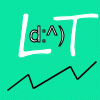I may be completely wrong, but looking at this chart I don't see NYSI trendline breaks as relevant.
As a matter of fact both previous trendline breaks on this chart have been precursors to significant rallies.
However RSI seems to be a better tradable indicator.
Low RSI to me means that many stocks have been declining for a long time and most likely have reached oversold conditions.
If I'm wrong, please explain the relevance of trendlines on summations. Because I don't see it.

Edited by ogm, 11 August 2007 - 08:44 PM.















